If you live in the Transition Zone, an area that runs from Kansas to the Carolinas, a lawn made of Zoysia grass can be an excellent choice for you. Zoysia grass is resistant to heat and drought and provides a lush, emerald-green lawn throughout the growing season. Moreover, when it comes to golf courses, Zoysia grass is a popular choice for fairways and tees because it allows the ball to sit up higher, making it easier to hit. And we all want a lawn with golf course-worthy grass, don’t we? In this article, let’s talk about how to seed a new zoysia lawn.

Zoysia grasses are known for their ability to withstand seasonal variations in sunlight, water, and temperature.
Zoysia grass was brought to the United States from Asia in 1895. It thrives in temperatures between 80 and 95 degrees Fahrenheit and can be grown during the spring, summer, and early fall months. Zoysia grass is highly resilient, and it can take heavy foot activity. It is tolerant of dryness and partial shade and grows thick and dense with a stolon-based root structure, which outperforms many unwanted plants in a yard.
The Zoysia grass can be cultivated from seed, sod, or plugs. However, since Zoysia takes a while to mature, it is typically installed using sod or plugs. Also, sowing Zoysia seed at the right time is vital for a new lawn. Zoysia seeds won’t germinate in the cold. After reaching maturity, Zoysia has bright green, almost emerald-colored blades that become straw-like and brown in the colder winter months.
Having said that, planting new Zoysia lawn doesn’t need to be difficult. If you follow the instructions below, your lawn will soon be the neighborhood’s crown jewel!
Before You Plant A Zoysia Grass Lawn
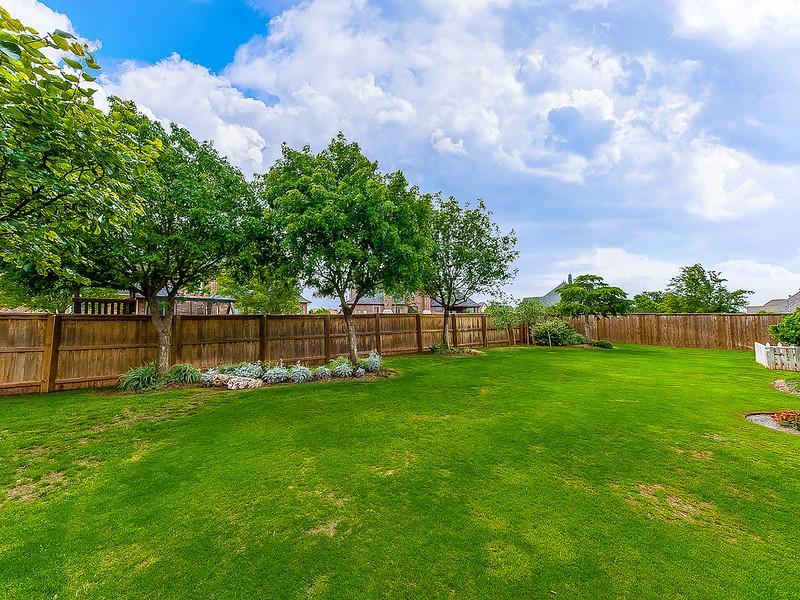
Under optimal growing conditions, the germination time for Zoysia seeds is between 14 and 21 days.
Here are a few things you need to know before you decide to plant Zoysia grass:
- You should not cover Zoysia seeds with a thin layer of soil or straw since seeds germinate more successfully when exposed to direct sunshine.
- The grass has a vibrant green color in the spring and summer, but after the first frost of autumn, the blades turn a tan or brown color as the grass goes dormant.
- Zoysia should be trimmed lower than other types of grass.
- Under optimal growing conditions, the germination time for Zoysia grass seeds is generally between 14 and 21 days (two to three weeks).
- When it comes to planting Zoysia grass, the best times are late spring (after there is no longer any possibility of frost) and early summer. Plant seeds only when the average daily temperature is at least 70 degrees.
- Planting Zoysia can also be done at the beginning of fall; however, you need to make sure that you plant at least sixty days before the first expected frost of the fall.
- The optimal growing conditions for Zoysia grass are found in USDA zones 6 to 11.
- Since the Zoysia grass blades grow so closely together, they are exceptionally good at withstanding heavy foot traffic and play.
- Zoysia is a low-maintenance grass that thrives with minimal watering.
- It is able to tolerate hot temperatures and dry conditions.
- Southern and transitional zones are optimal for its growth.
- Zoysia grass thrives in full sun and can also be grown in partial shade.
- Zoysia grass thrives in warm climates but can withstand the cold.
Related: How To Overseed A Zoysia Grass Lawn Correctly? The Ultimate Guide
How To Plant A New Zoysia Grass Lawn?
Zoysia grass can be planted in a variety of different methods; however, using sod is the method that is most strongly recommended. It can often take more than a year for Zoysia grass plugs, sprigs, and seeding to get fully established.
1. Planting Zoysia Grass Plugs
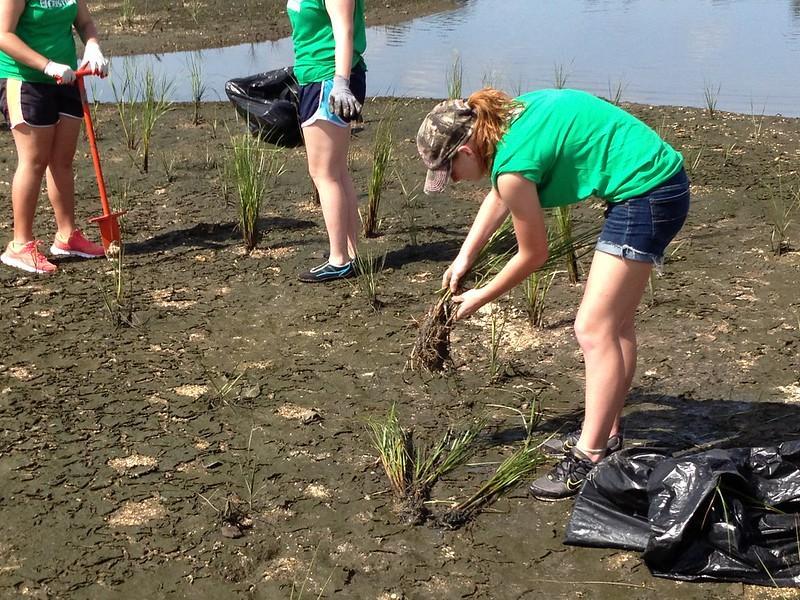
Plant Zoysia grass plugs at least 12 inches apart to ensure good development.
The cost and amount of work involved in planting Zoysia grass through plugs are somewhere between that of manually planting seeds and laying sod. Once the plugs are in place, you should aim to water the grass plugs every day for the following two weeks.
You can start mowing the grass once the grass blades have grown to a height of two inches. It is imperative that all the clippings from this initial mowing session be removed, as an excessive amount of thatch might stifle the development of grass.
Also, before planting the grass plugs, you need to dethatch the area. We also recommend that you add some fertilizer over the area where you intend to lay the plugs. Once done, create some holes and place the Zoysia grass plugs into the holes. Lastly, make sure that you put the plugs approximately one foot away from one another.
2. Planting Zoysia Grass Sod
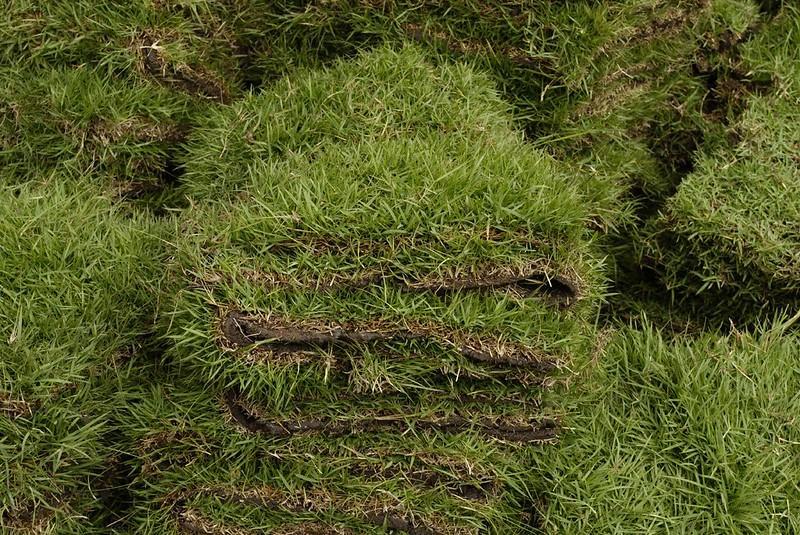
Zoysia sod is a fast and easy way to get a beautiful lawn without waiting for seeds or plugs to grow.
Since Zoysia grass develops so slowly from seed, sodding is typically recommended as a faster alternative for planting the grass. To prepare the soil for sod pallets, mix some fertilizer into the surface one to two inches of the ground. In addition to this, you need to ensure that you pull out any weeds that may be present in the soil.
When the Zoysia grass sod is in place, you can use your hands or a dedicated sod roller to firmly push the pallets of Zoysia grass sod into the ground. Here, it is essential to ensure that you eliminate any air bubbles and level out any bumps when laying sod. After sod pieces have been placed, immediately apply water at a depth of 1 to 2 inches.
Zoysia sod should be laid out and unrolled beginning at the lawn’s longest edge. When laying sod, stagger the pallet halves as you do when laying bricks.
Also, when you are placing the pallets of Zoysia grass sod, you need to ensure that the borders do not overlap and seams are as near as they can get to each other. Leaving spaces between the joints might make the edges dry and brittle.
After laying sod, you should water your grass once every day for the next two weeks, ideally in the early morning. Then, after 14 to 21 days, the grass will have established roots, and you should cut down on watering once every two days for a week.
Following that, cut back the amount of water to half an inch once every seven days. Also, your watering plan should be adjusted so that it takes into account rain. And, if puddles are appearing in your yard, you are likely overwatering it.
Related: Zoysia Grass – Popular Types | How To Choose The Right Zoysia For Your Lawn
3. Planting Zoysia Grass Seeds
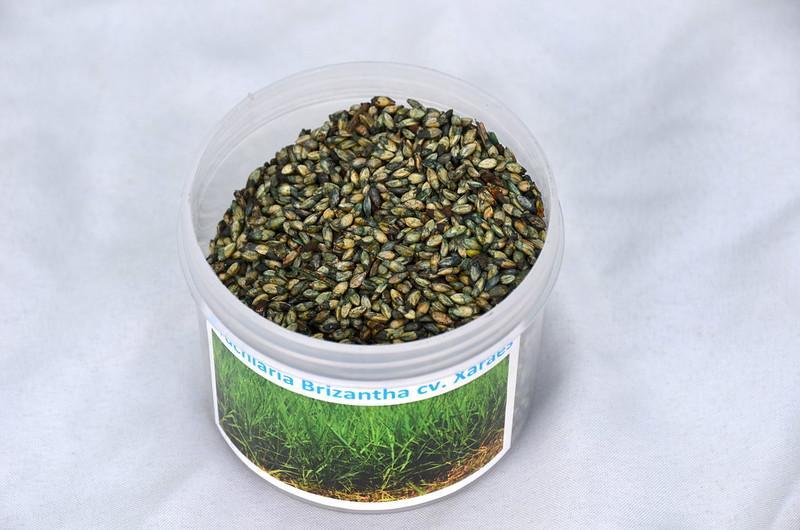
Plant Zoysia grass seeds in late spring (after all dangers of frost have gone) until early summer.
Since Zoysia prefers warm weather, the best time for seeding Zoysia grass is in the mid and late spring, once the harsh winter months have passed and the soil has had a chance to warm up. Putting Zoysia seed following late fall is not recommended since the plant cannot keep the moisture necessary for growth during cold weather.
Nevertheless, to plant Zoysia grass seeds, you must first:
- Work the top two to three inches of soil using a tiller to break it up.
- After tilling the soil, spread a nitrogen fertilizer and mix it thoroughly in the ground.
- Also, perform a soil test to ensure your soil has a pH of 5.8 to 6.5.
After that, spread out the grass seed uniformly and follow the instructions for how many seeds per square foot are advised on the packet. You have the option of using a drop seeder or a broadcast seeder. The seed should next be raked in and worked about until it is uniformly distributed. Zoysia grass prefers the sun, so its seeds should be planted in a location with no or partial shade for them to sprout and grow into healthy plants.
In the beginning, you have to water your new grass three times every day, especially when the weather is really hot. However, you can return to your regularly scheduled maintenance after Zoysia has grown to a height of approximately 1 to 2 inches.
Steps For Planting A New Zoysia Lawn
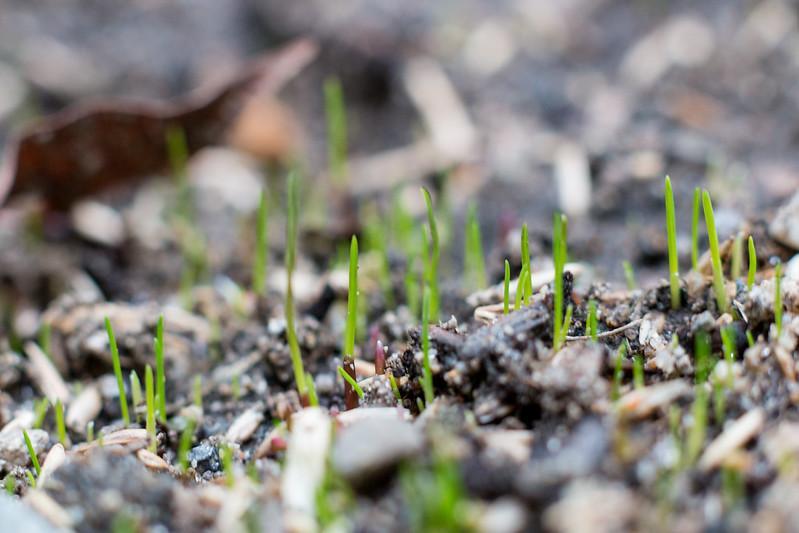
Seeds, plugs, and sod need a few days of perfect growing conditions to become securely rooted in the ground.
You can use any of the methods mentioned above to establish a new Zoysia grass lawn. The methods differ in their particulars, but they all have the same fundamentals.
Here are the basics of establishing a new Zoysia grass lawn described in detail:
Measure The Area
You should take some measurements of your yard before you begin so that you may avoid running out of or buying too much seed, sod, and plugs. You can get a rough idea of the yard size with the help of one of the many online yard measurement tools.
Test The Soil
If your soil chemistry is off, you won’t want to waste time and money establishing new grass. So, 30 days before you plan to establish the new yard, get your lawn soil tested to ensure your grass has the proper mix of all the nutrients needed for healthy germination.
The ideal soil pH for Zoysia is between 6.0 and 6.5. You can easily get low-cost soil tests through the extension service of your county or state.
Make Soil Amendments
The findings of the soil test will help you determine whether or not you need to amend your soil with nutrients in order to achieve the desired pH.
To make necessary soil amendments, you will need to till the upper four to six centimeters of the yard soil while adding the required amount of missing nutrients.
Get The Soil Ready
It is time to level the surface now that your soil’s pH and nutrient content have been appropriately adjusted for ideal grass seed germination, growth, and development.
To begin, make use of a sturdy rake to pulverize large clumps of dirt and clear trash such as stones, rocks, leaves, and sticks from the area. The next step is to use a light rake to make a loose and fine area of your land for the new lawn.
Add Seed, Sod, Or Plugs
Add seed, sod or plugs to the designated yard area using the respective guides above.
Keep The New Lawn Moist
It will take a few days for seeds, plugs, and sod to become firmly planted in the ground under optimal growing conditions. Maintain an average moisture level in the soil without making it muddy throughout this period. After some time has passed and your new lawn has become established, you can resume your regular watering routine.
Wait & Enjoy
After around 14 to 21 days, you should see lush, verdant Zoysia grass growing on your lawn. Never mow the grass that has not yet reached its full maturity. However, the lawn can be trimmed after about five to six weeks, and the grass has been fully established.
Also, apply a selective herbicide as soon as you notice any signs of weed growth.
Seeding An Existing Lawn
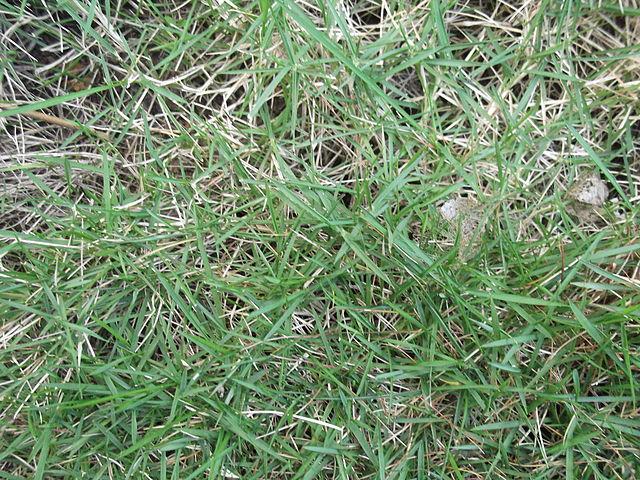
Seeding an existing lawn or overseeding is the best way to fix a patchy or thin Zoysia turf.
There are two ways in which you can seed an existing Zoysia lawn:
Method 1
Closely cut the grass, then aerate it well using a spike or plug aerator. Sow the grass seeds at the recommended rate, then rake them over lightly. The seeds need to be wet/moist at all times and, therefore, must be watered once a day for the next 30 days.
However, reduce watering as your lawn develops into a uniform green color. Applying weed control agents on grass before sowing may hinder the seeds’ capacity to germinate and thrive. You can use Glyphosate to kill weeds and other vegetation.
However, in that case, wait at least seven days before planting. Also, in the ninety days before when you intend to plant your seed, you should take care not to apply any pre-emergents or control treatments that combine feed and weed ingredients.
These items may harm seeds and/or hinder germination. Additionally, before applying any weed control products and before sowing, make sure to read and follow all manufacturer’s recommendations and application directions.
Method 2
Another option is to use a nonselective herbicide that has been approved for use on lawns and spray it on the existing grass. Then, wait at least seven days to ensure that all the grass has died off. Spray additional herbicide over any areas that are not totally dead.
After that, cut the dead grass as near the ground as possible with a regular lawn mower. If there is no excessive debris (such as leaves, twigs, clippings, etc.), you should leave the clippings behind to act as a natural mulch for new seeds.
Next, scatter grass seeds uniformly across the area, planting according to the coverage rate recommended on the box. Water the seedbed every day for 30 days and, after the grass is developed and established, limit watering to as needed.
Related: How To Make Your Zoysia Grass Spread Faster? A Comprehensive Guide
Final Thoughts
Warm-season turfgrass Zoysia is a perennial plant that spreads through stolons and rhizomes. The rigidity of the leaf blades is a distinguishing feature of this dense turf. Zoysia has excellent resistance to wear, moderate tolerance for shade, and good resistance to drought. Mid- to late spring (after the last frost) or early summer is best for planting Zoysia.
Also, it can be planted in the fall. However, that should be done at least 60 days before the first frost. After this point, there is a risk that the seedlings you sow won’t make it through the winter since they won’t have had enough time to take root before the ground freezes.
Frequently Asked Questions (FAQs)
What is the best height for Zoysia grass?
Turfgrass specialists advise a mowing height of 1.5 inches for most Zoysia grass cultivars. Mowing at the height of around 1 inch will also help prevent disease in Zoysia lawns. However, Zoysia grass should be kept between 2 and 2.5 inches long when mowed in partial shade. It is because grass has less light to make its food in the shade.
What type of fertilizer is best for Zoysia grass?
Nitrogen is the most essential nutrient that Zoysia requires in its food. Accordingly, the best fertilizer for Zoysia grass will be a blend with the percentages 15-0-15, 15-0-10, or 15-0-5. For example, if a fertilizer is described as having a mix ratio of 15-0-15, it indicates that it will include 15% nitrogen, 0% phosphorus, and 15% potassium.
What happens if you don’t mow Zoysia grass?
Letting your Zoysia grass go for too long without cutting it could get so thick that you break your mower. Additionally, suppose large clumps of Zoysia are allowed to remain on the lawn for an extended period of time. In that case, this can make the live grass located beneath it more susceptible to disease, rot, and death.
Should you scalp Zoysia grass?
Zoysia lawns benefit from a good “scalp,” or mowing, because it removes debris and dead grass from the yard when the grass is dormant. Zoysia lawns need to be scalped every spring. Scalping, where dead, straw-colored grass is removed, encourages faster green-up and helps eliminate thatch and weed problems all summer.
Which is better, Bermuda or Zoysia?
Despite the fact that both Zoysia and Bermuda can withstand heavy foot traffic, Bermuda grass is considerably more durable. When compared to Zoysia grass, the upfront and ongoing costs of growing and maintaining a lawn made of Bermuda grass are also far lower. However, Zoysia grass is more shade resistant than Bermuda grass, which may be useful depending on the characteristics of your lawn.
Sources For Further Reading
Planting and Maintaining a Zoysia Lawn | University of Maryland Extension. (2022). Retrieved 9 October 2022, from https://extension.umd.edu/resource/planting-and-maintaining-Zoysia-lawn
Lawns, E. (2022). Establishment and Care of Zoysiagrass Lawns. University of Missouri(opens in new window). Retrieved 9 October 2022, from https://extension.missouri.edu/publications/g6706
Zoysia Lawns. (2022). Kansas State University Research and Extension Service. Retrieved 9 October 2022, from https://www.ford.k-state.edu/lawn-garden/Zoysialawn.html
Editor’s Recommendations
Sevin Dust 101: How To Use Sevin Dust To Control Pests, and Is It Safe?
Top 10 Weed Killers For Bermuda Grass | A Comprehensive Guide







